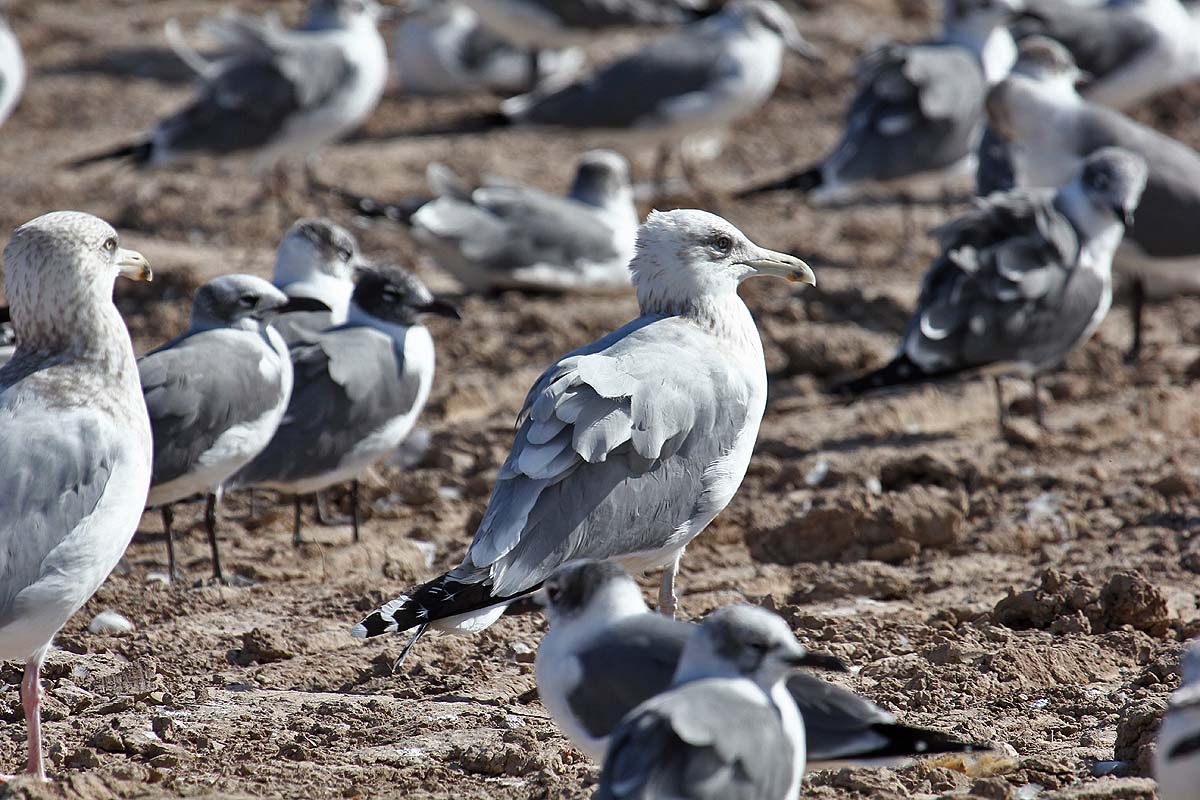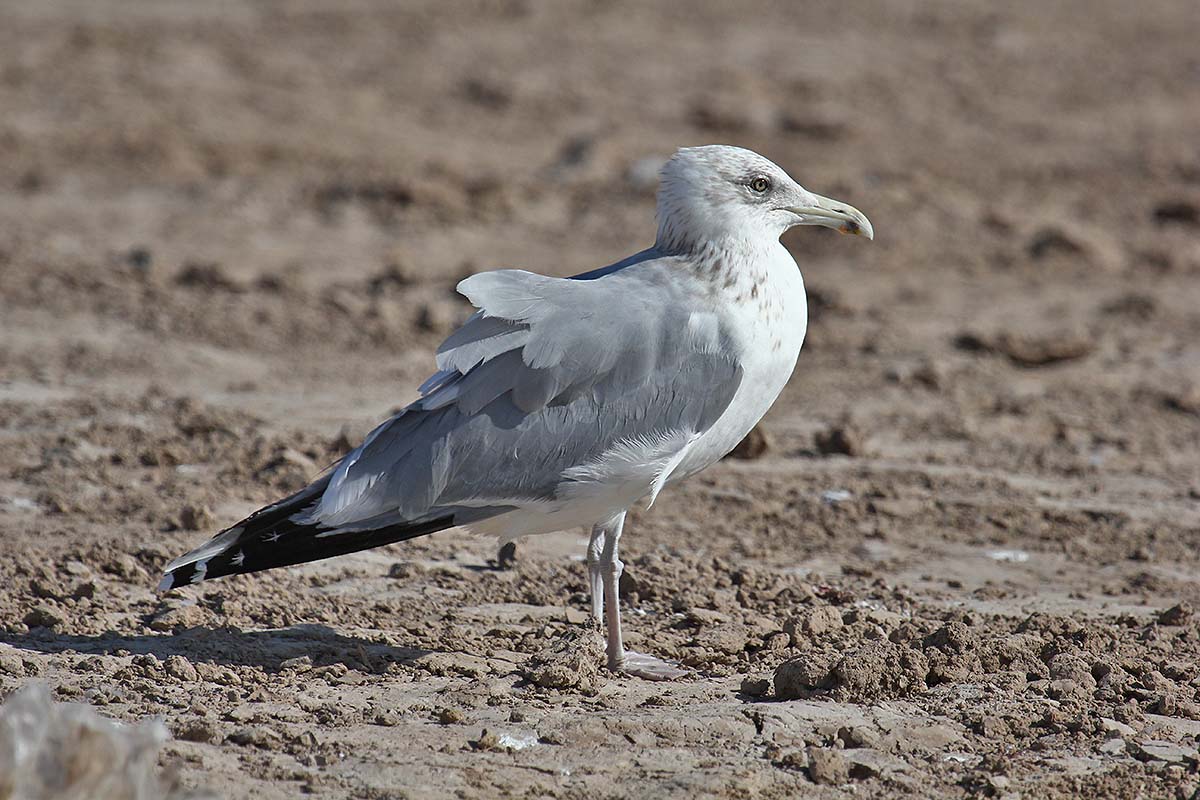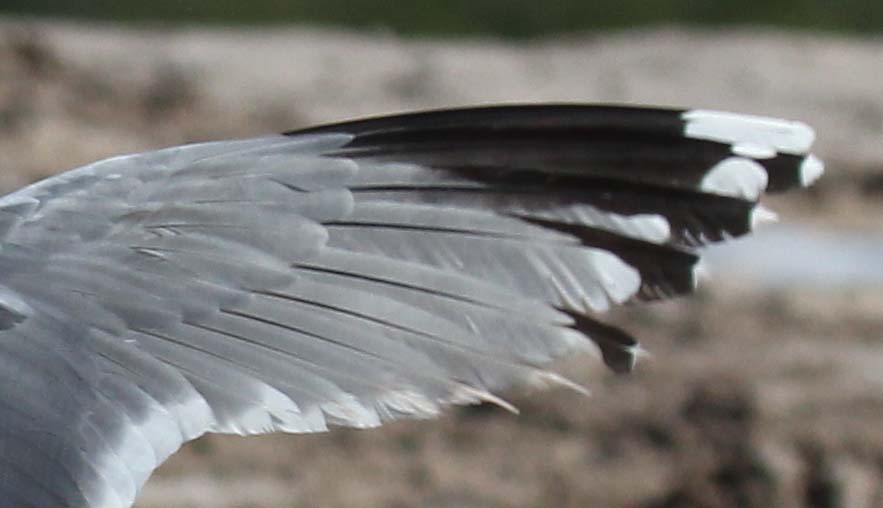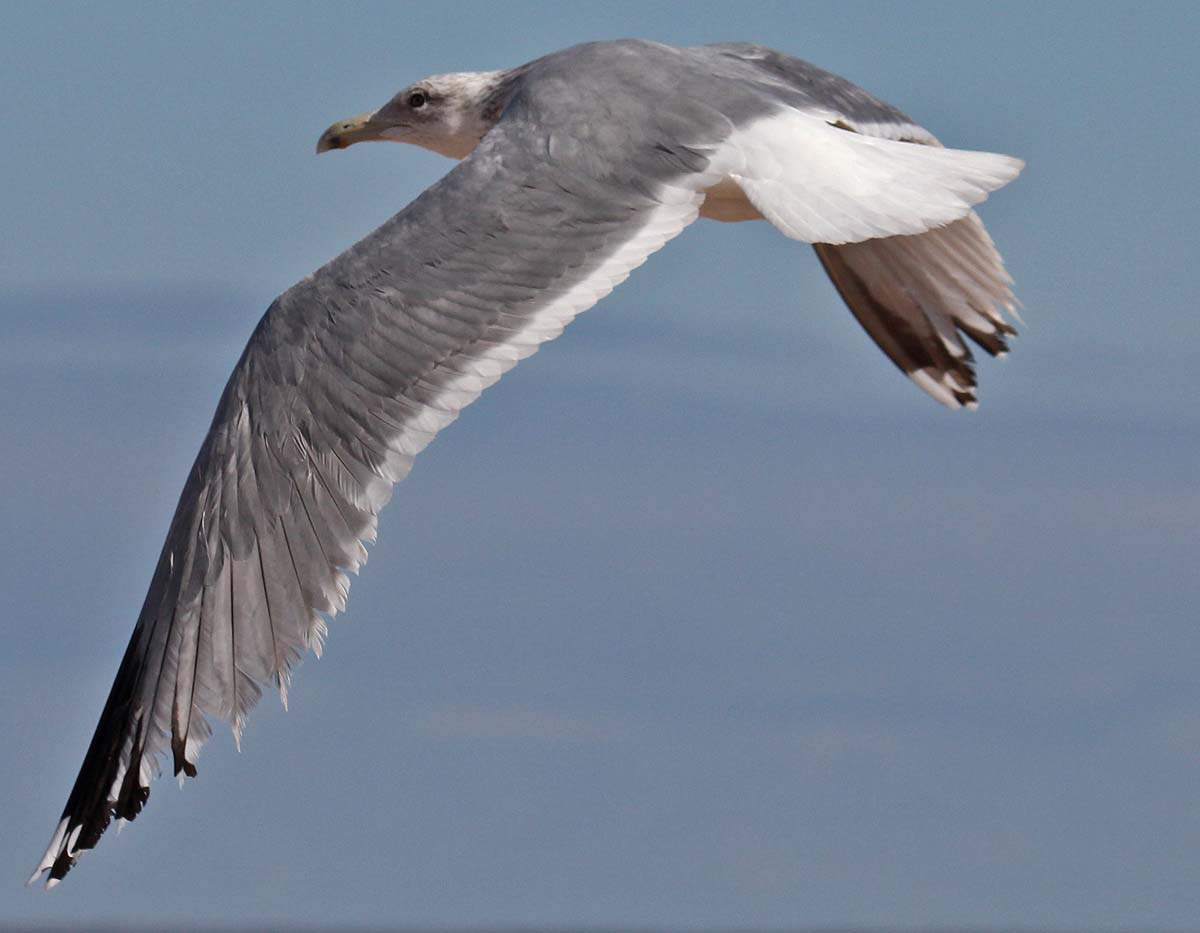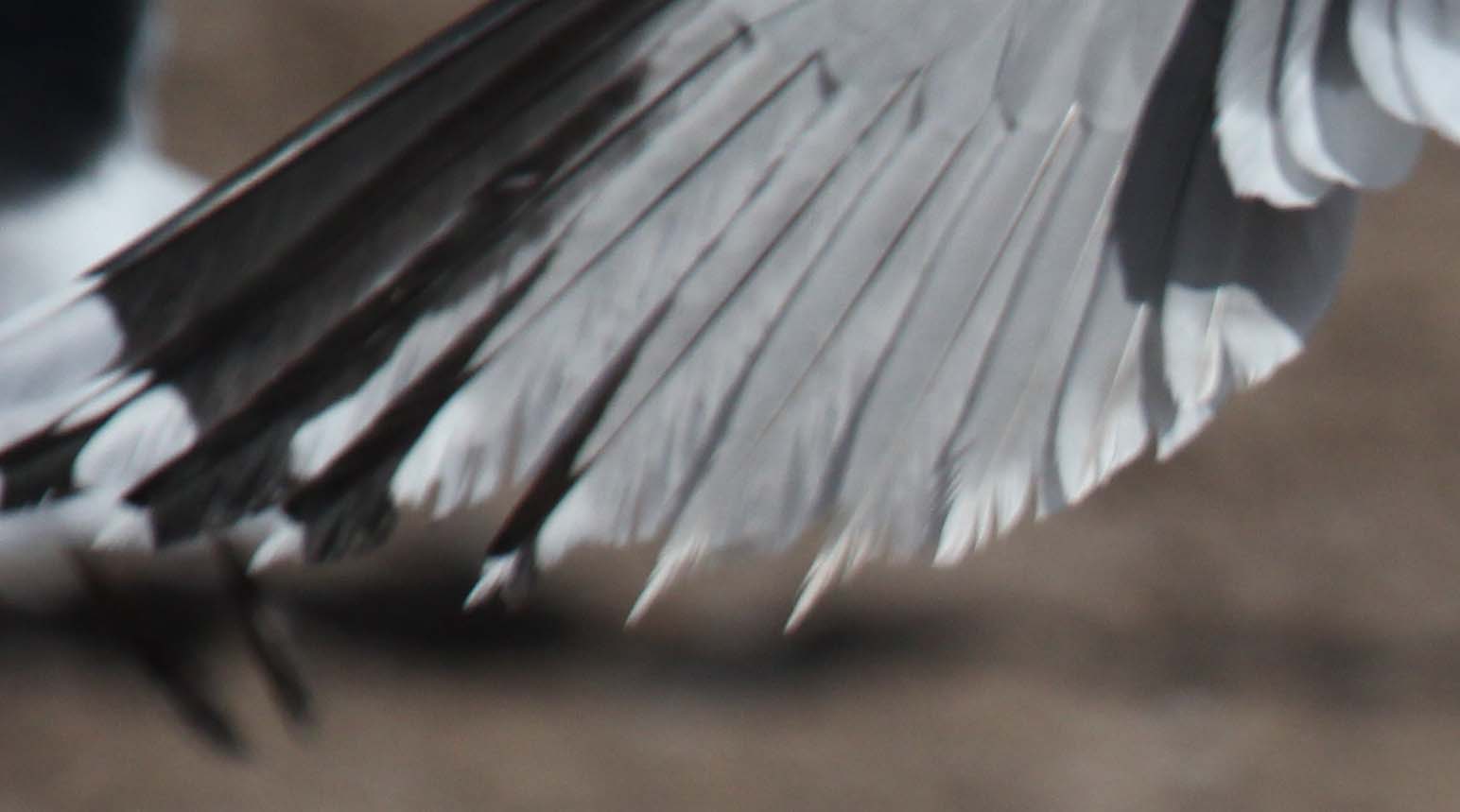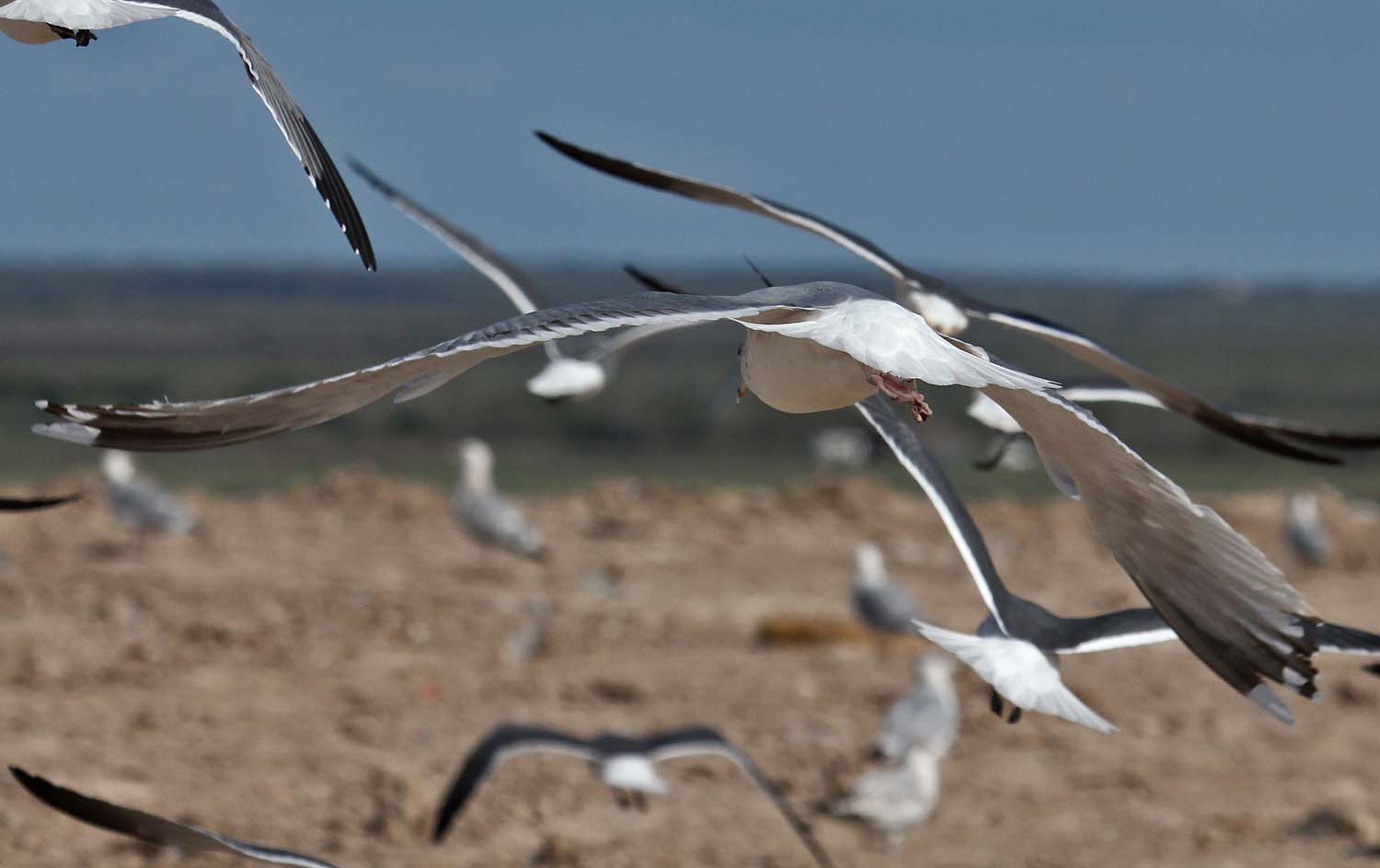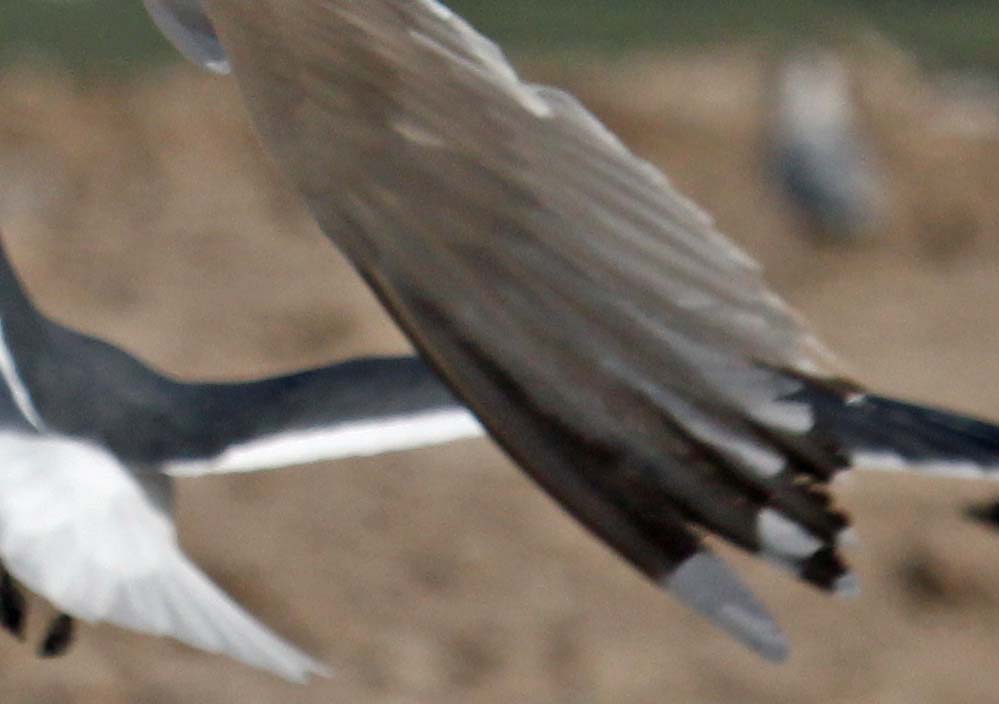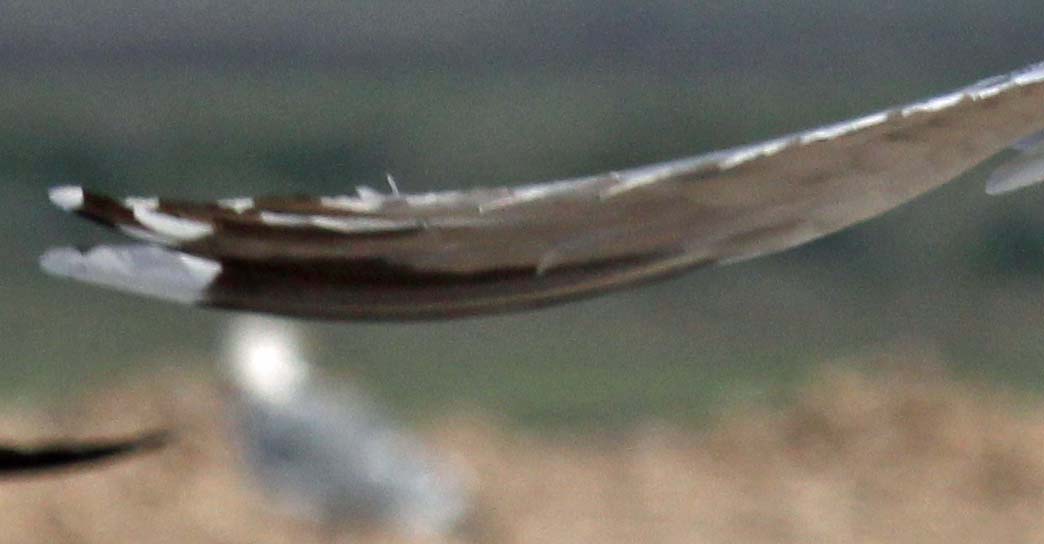
This adult Herring Gull type individual was photographed at Brownsville Landfill, Cameron county, Texas on January 18. It has some features that are odd for a presumed smithsonianus:
- slightly darker mantle tone than typical smith.
- P10 and P9 appearing to be significantly fresher/less worn than P8 - P3 - perhaps indicative of arrested molt.
- P10 with large apical white mirror that has just a tiny notch of black subterminally; from below, inner web with gray tongue
c. half of visible length and with a distal tip gradually angled away from the shaft to the inner edge.
- P9 with medium subapical white mirror that extends obviously onto the outer web;
from above the black extends to the coverts on the outer web and almost to the coverts on the inner web.
- P8 from above with a long gray inner web tongue ending with a white spot before a large subterminal black band; the tip of the inner tongue is c. the same length as that on P7; the black on the outer web extends basally to cover c. 7/8ths of the visible feather beyond the coverts and ends basally with a short ill-defined point; on the inner web there is extensive black along the shaft
.
- P7 has a typical smith pattern in that the black subterminal band extends significantly along the outer edge coming to a sharp "bayonet" point, plus there is a small, thin extension of black along the outer edge of the shaft; on the inner web the gray tongue is long and ends with a white spot.
- the P6s are asymmetric:
on the left wing the pattern is very like that of P7, but with slightly less extensive black - however the black on the inner web does not curl around the white tongue-tip. On the right wing the pattern is similar to that of the left but the black that extends up to the bayonet point on the outer web is much smaller - barely extending beyond the black along the shaft. As with the left wing, the black on the inner web does not curl up around the white tongue-tip.
- P5 appears to lack any black markings. It is hard to be certain due to the extreme wear, but any black in this area wears away much less than the white parts, and usually remains intact even when much of the white areas have eroded.
